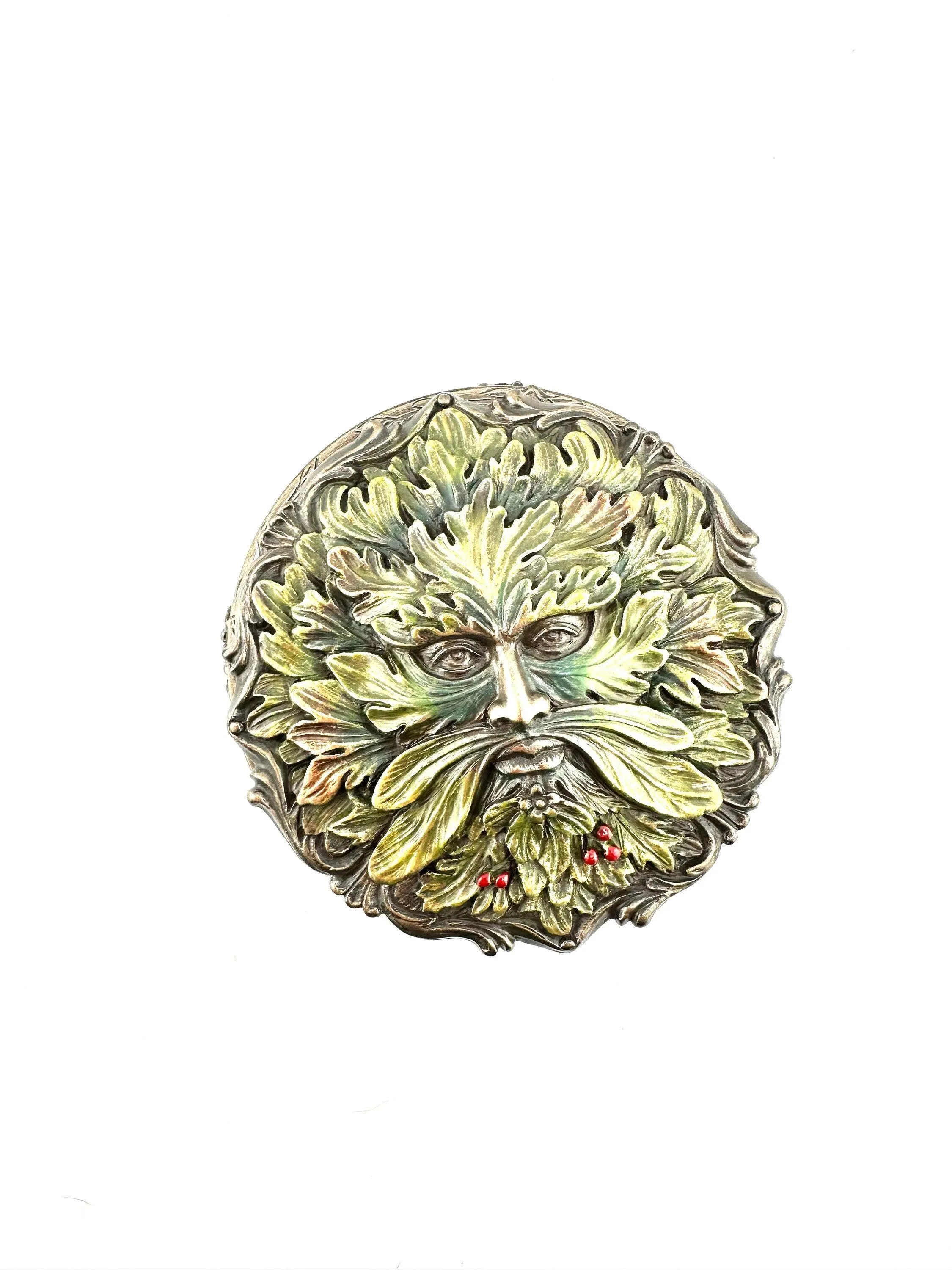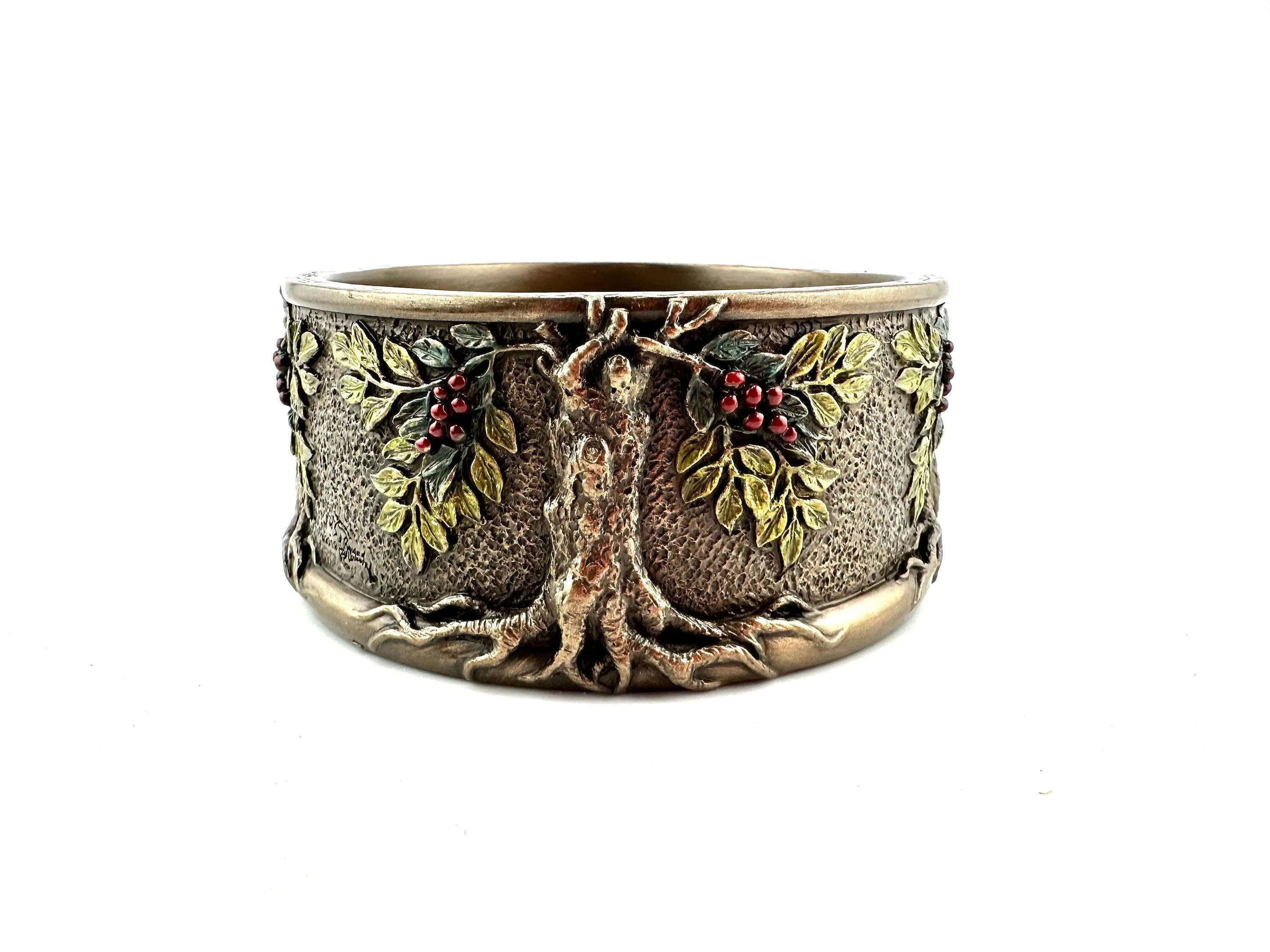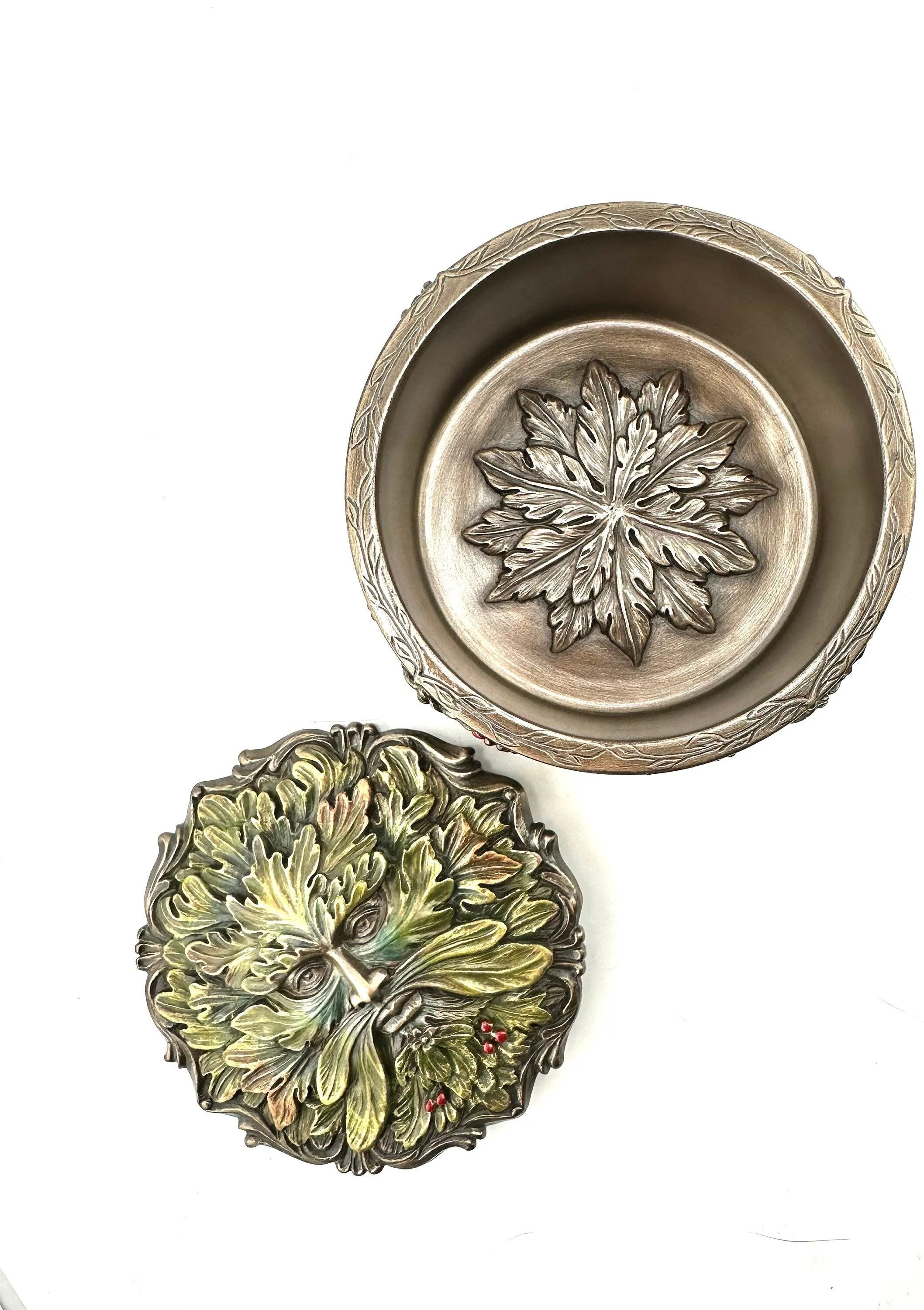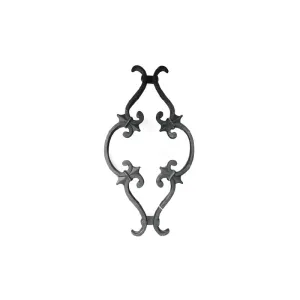The Green Man is often depicted as a face surrounded by or made up of leaves, vines, or other vegetation, emphasizing the merging of human and plant life. The imagery of the Green Man is found in various cultures and religions throughout history.
Key characteristics and associations of the Green Man include:
Nature and Fertility: The Green Man is often associated with nature, fertility, and the seasonal cycle. As a symbol of the life force and renewal, the Green Man is linked to the flourishing of the natural world.
Pagan and Celtic Traditions: The Green Man has deep roots in pagan and Celtic traditions. In these cultures, the figure is seen as a guardian of the forest, embodying the spirit of the woods and the vitality of the Earth.
Architecture and Art: The Green Man's face appears in many medieval European cathedrals, churches, and other architectural elements. This symbol was integrated into Christian structures, perhaps as a way to convey the continuity of life and divine presence in nature.
Symbol of Rebirth: The Green Man is often associated with themes of death and rebirth, reflecting the cyclical nature of life. This symbolism can be found in various mythologies and folklore.
Modern Pagan and Neopaganism: In contemporary Pagan and Neopagan traditions, the Green Man is sometimes revered as a deity or nature spirit. Some modern practitioners incorporate the Green Man into their rituals and celebrations, especially those related to seasonal changes.
Folklore and Mythology: The Green Man appears in different forms in various mythologies and folk traditions worldwide. His image can represent the spirit of the forest, the wild, and the untamed aspects of nature.
3 7/8" x 3 7/8" x 2.5"H

















